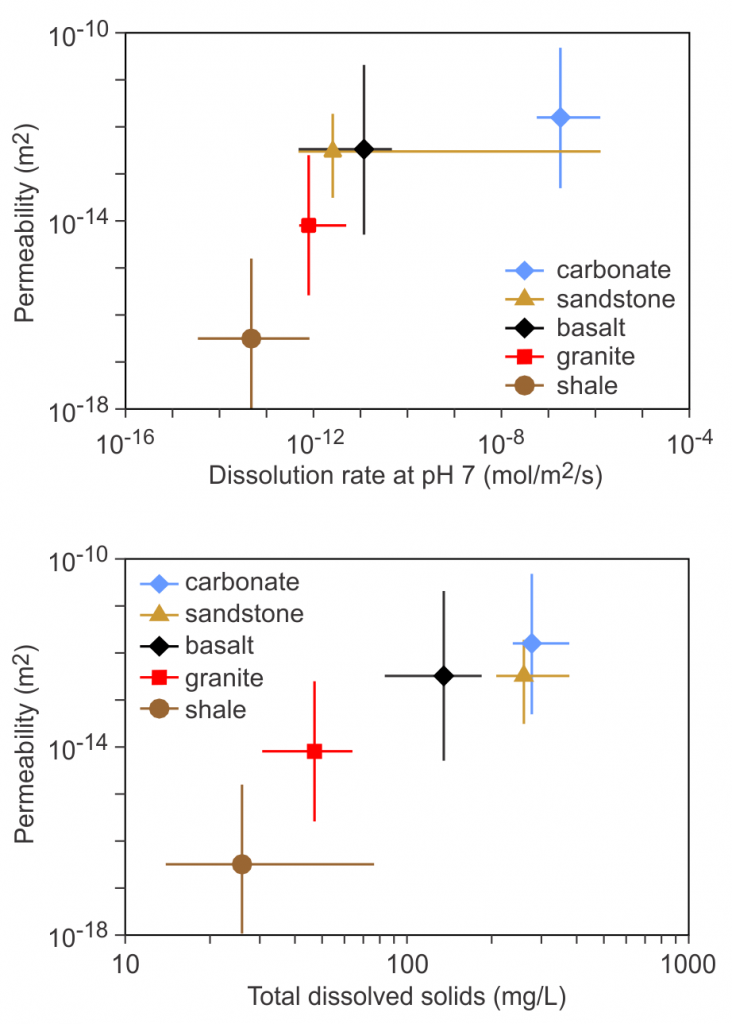
Towards the end of the 19th century, it was discovered that the permeability of gravel, sand, silt, and clay is proportional to their grain size. This makes sense between water flows through the pores between the grains and there’s less resistance to flow where the pores are larger. But what about bedrock aquifers? These are usually classified by lithology, with limestone, sandstone, basalt, granite, and shale representing the five major lithology groups. But why is limestone 50,000 times more permeable on average than shale? The answer to this simple question remained elusive throughout the 20th century.
It’s clear that most bedrock aquifers have preferential flow, with much flow taking place through fractures that were formed by tectonic processes, but there is no simple correlation between fracturing and permeability. A second important process is weathering, and it’s been found that on average the permeability of rocks is proportional to the dissolution rate of their constituent minerals and to their solute concentrations (see the figure). This suggests that fracturing enhances bedrock permeability, and then weathering further enhances the permeability. This occurs both in carbonate aquifers and also in silicate aquifers.